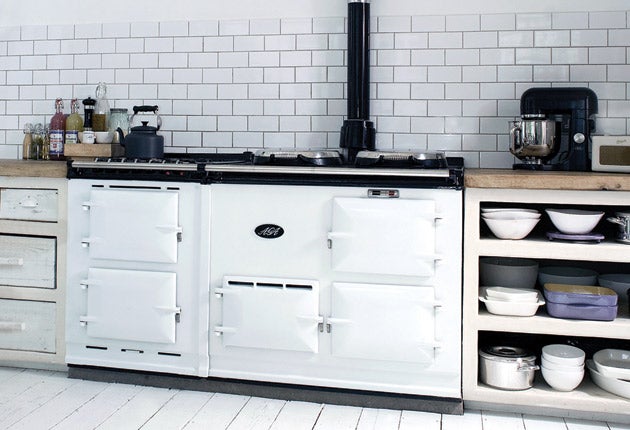The Secret History Of: The AGA cooker

Beloved by the middle classes and owners of farmhouses, the AGA is a totemic symbol of country living. There is usually a wet dog lying in front of it, a pile of laundry steaming gently on it, and preferably the aroma of baking rising from within.
The AGA is an opinion divider though. There are those who refuse to cook on anything else, and the rest who point scornfully to the fact that when you raise the lids you lose heat from the oven. Or the fact that while brilliant at heating the house in winter, they have the same effect in summer – which is less brilliant.
So how did the AGA come about? Well, it was, as is often the case with the best inventions, an accident. Gustaf Dalé*was a Swedish Nobel Prize winner, who was blinded when a bulb he was testing for an automatic flashing lighthouse exploded. On returning home he was apparently appalled to discover how much time his wife and the maid spent tending the oven and resolved to invent a cooker that could be left on all the time and didn't need constant attention.
Laura James, an AGA representative (Aga-web.co.uk; 0845 7125207), says: "He designed his AGA in 1922 and seven years later, a British company had bought the licence and from then on it was made in Britain."
All AGAs are now made at a Shropshire foundry, which has been listed as a world heritage site because of its importance as the birthplace of the industrial revolution.
"They are popular in Sweden but it is the British who have really taken AGAs to their hearts, says James. "They suit our damp climate and they make our houses cosy and they are so multi-tasking. You can make toast, cook food, dry laundry, revive lambs."
Well the last point might not be vital for most of us, but James points out that these days you can programme your AGA to run on a low temperature while you are out at work and gear itself up ready for cooking when you get back.
"I am sitting next to mine on one of the hottest days of the year and it's fine, but people refuse to believe it," she says. "The fact that they are programmable has removed one of the main objections that people use to have."
An AGA is almost completely recyclable and around 70 per cent of each one is now made from previously used material – this can include car gearboxes, guttering, lamp posts, door fitting and drain covers. You can choose the fuel that suits you. AGAs can run on natural gas, kerosene, diesel and electricity.
So if you want one, get your cheque book out – they start at £4,995 including installation, although a survey by estate agents Savills found that houses with AGAs sell faster than those without and you do get the cost back when you sell your house.
Subscribe to Independent Premium to bookmark this article
Want to bookmark your favourite articles and stories to read or reference later? Start your Independent Premium subscription today.

Join our commenting forum
Join thought-provoking conversations, follow other Independent readers and see their replies
Comments